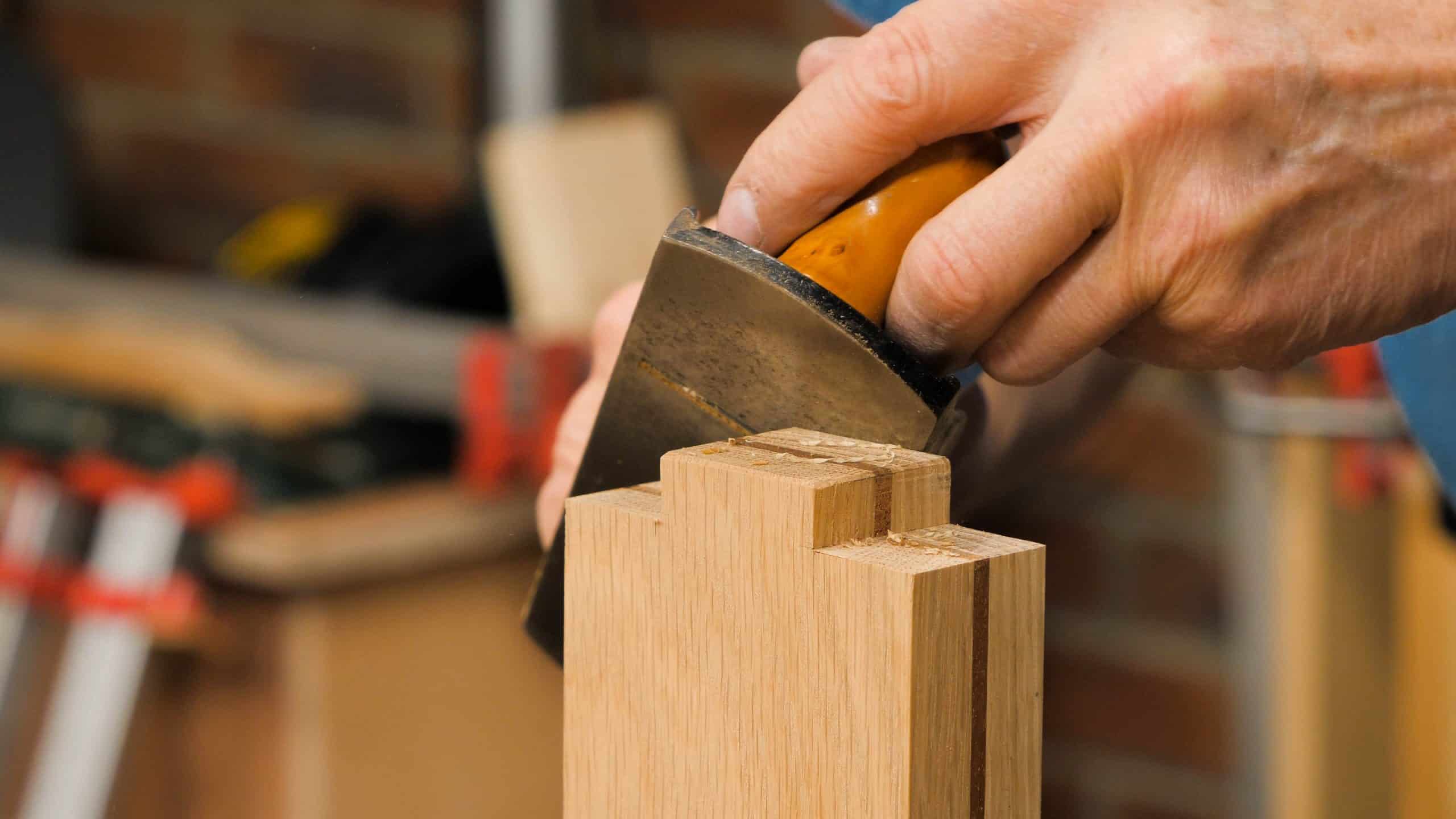Wine Rack: Episode 4
This is an episode in a paid series. Want to watch it? You just need to sign up as a paid member, and you can enjoy this video and many other videos we think you will love.
In this episode, we conclude the final joinery and prepare for the testing and checking of all the components for cleaning up the surfaces and gluing up. Paul emphasizes the necessity of accurately working towards the conclusion as small mistakes now can affect the whole in a big way. Paul’s pet phrase is, “It is not what you make that’s so important, but how you make it,” and the smaller projects often demand higher levels of refining. This episode covers all of these finalising issues.


What a wonderful project, having followed this all the way I am certain that this will make nice Christmas gifts for next year and already have in mind who will be on my list. I love the way you have made the joints, Can’t wait till next year to get going.
I have one in work already. Forming the barriers has been a challange for me. Things want to slide around while going to the vice….. I glued my first attempt to the caul…. this is a fun project!
Merry Christmas for you and family!
Merry Xmas to everyone, great project have a wonderful time.
Such a beautiful piece! Merry Christmas dear Paul, Joseph and all!
Nice work Paul , and well done to the producer . Happy Christmas
Thanks Paul. Will make on for my mom for Christmas 2020.
I like when you do the multiples with the music as I’ve noticed you often will show multiple different techniques. I don’t know if this is intentional but it is appreciated to see slightly different ways to achieve the same results.
Could you please explain the purpose of using the sandpaper at the end before finishing? After having obtained such nice feeling wood from a hand plane, I am very reluctant to want to then use sandpaper. You must do it for good reason and I’d like to better understand it. I’ve been skipping the sandpaper part at the end and things seem to look fine when finished. Sorry as I’ve asked this before. I just don’t fully understand what the sandpaper does to help.
@joeleonetti
I often finish straight from the blade, too – however, as I understand it, the barely visible, minute scratches (no better way of putting it) left by fine sandpaper serves to homogenise, in a visual sense, the basis surface that is to have a laquer-type finish….. shellac or French Polish or similar natural applications.
In other words, it looks better.
In some cases, I plane iron can leave a surface that is difficult for a finish to penetrate uniformly. Also, the finish film will not flow around sharp corners and will think out to nearly nothing, so rounding the corners is part of finish preparation. If you round the corners with paper, you probably want to tie in the rest of the surface. Making the surface uniform is yet another reason. Actually, abrasive paper allows you to make the surface _not_ uniform in an important way: You can do face grain to, say, 180, and then burnish end grain to 600 and mixed-grain to somewhere in between as a way to keep a more uniform color over a complicated piece. Those are the reasons I was taught, and that’s what I do, but some people do say they get the best surface right from the blade. I’m somewhat dubious based on my experience of being able to bury fuzz that comes up with water-based finishes and it becomes invisible within the final finish film.
Hi,
Paul says:
Mostly we use abrasive not to smooth the surface but to roughen it so that the finish has ‘tooth’ to cling to. Though it is less likely with shellac, some finishes will peel away from a super smooth surface.
Kind Regards,
Izzy
Thank you all for the feedback
I love this project Paul and will be attempting to make a couple of these. Can I ask however, rather than using screws for the top and base, would it be possible to use dowels and glue instead? Or especially for the base, would you think there is too much chance of splitting the tenons doing it that way?
Hi,
I passed your question on to Paul and he said:
You can just glue the tenon into the base and that would be enough. As to the top, you have to consider dowels are a relatively poor way of fixing in this position so the choice is yours.
Kind Regards,
Izzy